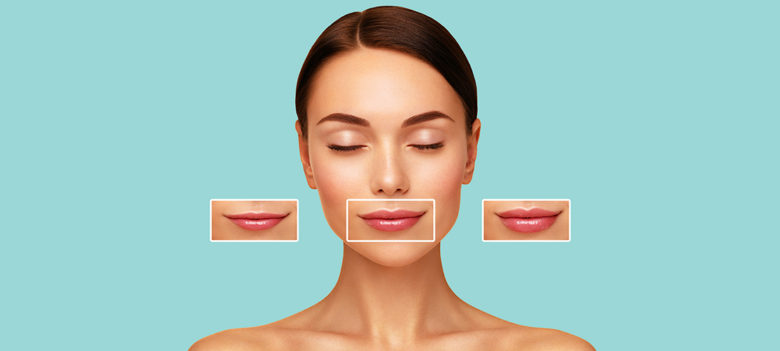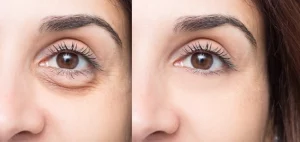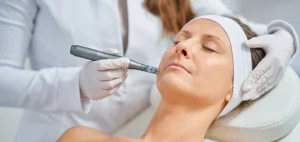What is Botox for lip flip?
Lip flip is a cosmetic treatment that uses Botox to improve the appearance of the upper lip. Unlike general lip fillers that increase the overall volume of the lips, Botox for lip flip relaxes the muscles around the mouth. Relaxing this muscle causes the upper lip to slowly slide outwards, giving the appearance of a more prominent, defined lip without increasing volume.
Botox is an excellent choice for people who want to augment their upper lip without using dermal fillers. It is ideal for folks with naturally thin or less noticeable upper lips who wish for a more pronounced pout. Furthermore, the lip flip Botox can also treat issues such as a gummy smile, in which the top gums are exposed when smiling.
A consultation with our skilled and experienced aesthetician is required to establish whether Botox for lip flip is the best solution for your desired look.
What is a unit in Botox?
A unit in Botox refers to a specific measure of the Botox product. It quantifies the amount of the active ingredient, botulinum toxin, used in the injection. The number of units needed for a procedure depends on the area being treated and the desired outcome.
A 5 unit lip flip involves injecting 5 units of Botox into the muscles around the upper lip. This amount is usually sufficient for a subtle enhancement, flipping the lip slightly outward for a fuller appearance. However, the exact number of units required can vary based on individual anatomy and desired results.
How many units of Botox for lip flip?
A lip flip procedure requires 4 to 10 units of Botox in total. Most providers use 4 to 6 units for the upper lip and 2 to 4 units for the lower lip if treated.
The exact dosage varies by patient and depends on lip thickness, muscle strength, and the degree of correction desired. Some patients may require fewer units, while others may need more to achieve the intended result.
During a consultation, a licensed medical professional evaluates the lips, reviews the patient’s goals, and determines the appropriate number of units. Because the treatment involves precise dosing in a sensitive area, it should be performed only by a trained and experienced injector.
What Happens If You Get Too Little Botox?
If too little Botox is used in a lip flip, the upper lip may show little to no visible change. The lip might not roll outward as expected, and the result can appear minimal or uneven. In such cases, the lips may look almost the same as before treatment, with no significant lift.
Because the dose for a lip flip is already small (usually 4–10 units), under-dosing makes the procedure less effective. This does not cause harm, but it means the desired enhancement is not achieved.
A follow-up session can correct the issue, where the injector may add additional units to produce the intended result.
What Are The Average Units Of Botox Needed?
The average number of Botox units used varies depending on the treatment area and individual needs, but having a general baseline can help patients better understand what to expect. Factors such as muscle strength, facial anatomy, and aesthetic goals all influence the final amount, which is why Botox treatments are customized rather than one-size-fits-all.
| Treatment Area | Typical Units (per side/total) | Notes |
| Forehead lines | 10–30 units | Depends on depth of lines and forehead size |
| Frown lines (glabella) | 15–25 units | Between eyebrows (“11 lines”) |
| Crow’s feet | 6–12 units per side | For lines around the outer eyes |
| Bunny lines (nose) | 5–10 units | Horizontal lines on the nose |
| Lip flip (upper lip) | 4–6 units | Sometimes lower lip adds 2–4 units |
| Gummy smile | 2–6 units | Reduces gum show when smiling |
| Lip lines / smoker lines | 4–10 units | Vertical lines around the mouth |
| Downturned mouth | 6–10 units | Lifts corners of the mouth |
| Chin dimpling | 6–10 units | For “orange peel” texture |
| Masseter (jaw slimming / TMJ) | 20–30 units per side | Strong jaw muscles may need more |
| Neck bands | 25–50 units total | For horizontal/vertical neck lines |
| Brow lift | 2–5 units per side | Subtle arching effect |
| Underarms (hyperhidrosis) | 50 units per side | Reduces excessive sweating |
| Thin lips (augmentation aid) | 4–10 units | Often paired with fillers |
| Uneven lips | 2–6 units | Customized, depends on asymmetry |
| Top lip lines | 4–8 units | Subtle softening |
| Full face (rejuvenation) | 60–100+ units | Combination approach, highly individualized |
Where Is Botox Injected For An Upper Lip Flip?
For a lip flip, Botox is injected into the orbicularis oris muscle around the mouth. The specific botox injection points are usually along the upper lip, near the vermilion border (the line between the lip and the surrounding skin). This technique helps relax the muscles and flip the lip outward slightly.
Botox Lip Flip Injection Sites
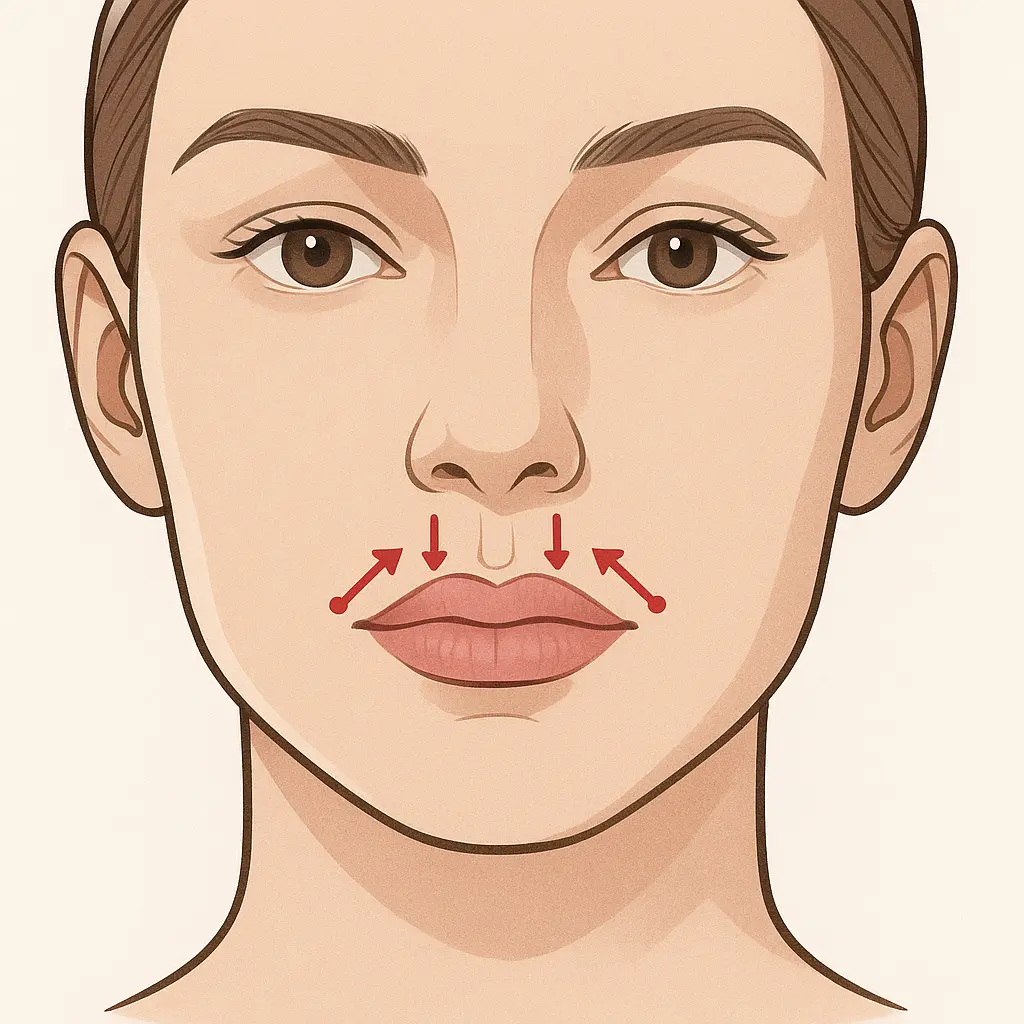
Lip Flip Before And After
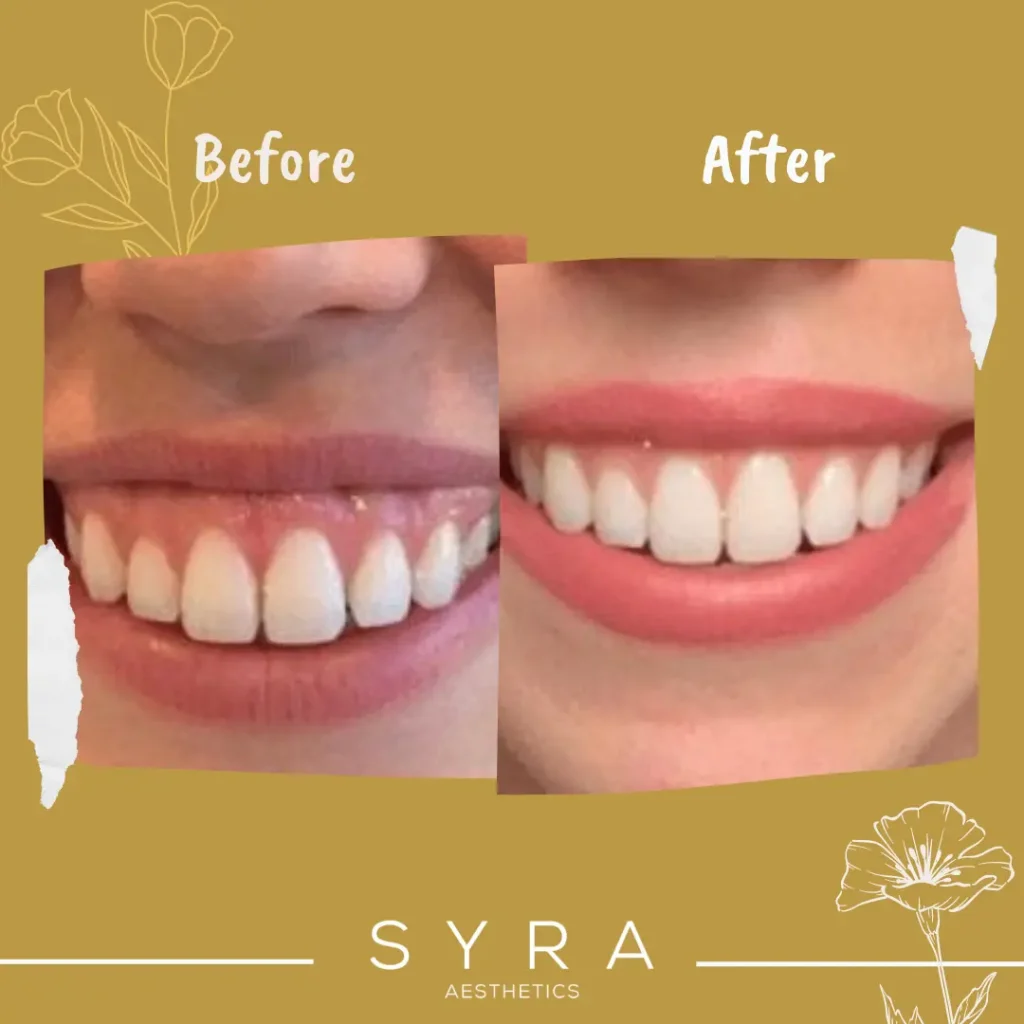
Lip Flip Botox Before And After
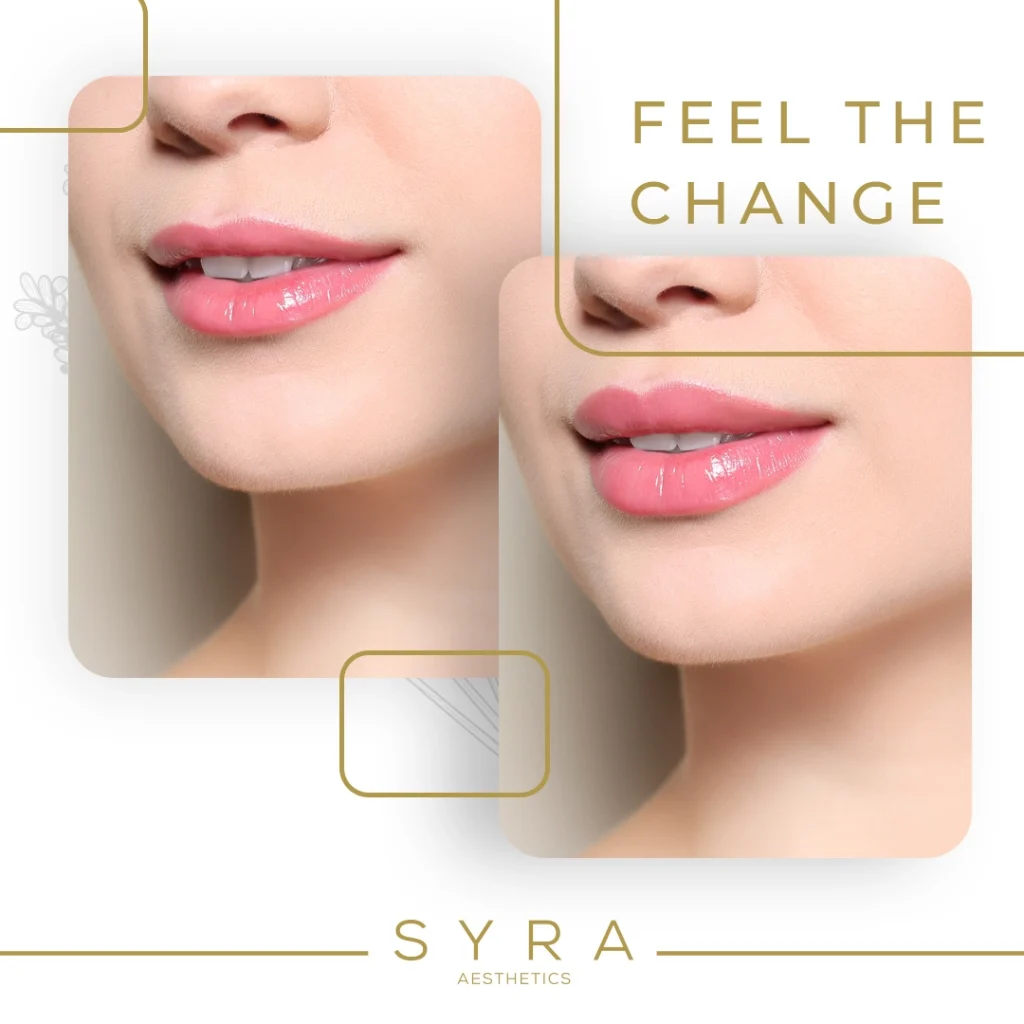
What Is The Botox Lip Flip Procedure?
The Botox lip flip procedure is a short, non-surgical treatment that usually takes less than 15 minutes. It begins with a consultation, where the provider reviews the patient’s goals, medical history, and lip anatomy to decide how many units of Botox are appropriate.
The area around the mouth is cleaned, and a topical numbing agent or ice may be used to reduce discomfort. Using a fine needle, the injector places small amounts of Botox into the orbicularis oris muscle, usually just above the upper lip and sometimes at the corners of the mouth. These injections relax the muscle, allowing the upper lip to roll slightly outward and appear fuller.
After the injections, ice or light pressure may be applied to minimize swelling or bruising. Patients are advised to avoid lying down, touching the treated area, or exercising for several hours following the procedure.
Daily activities can be resumed immediately, and there is no significant downtime. Results begin to appear within 3 to 5 days, reach full effect in about 2 weeks, and last for 2 to 3 months before another treatment is needed.
How Much Does A Botox Lip Flip Cost In NYC?
The cost of a Botox lip flip in New York ranges from $80 to $200, depending on the provider and the number of units used. Most patients require 4 to 10 units of Botox for this procedure.
At Dr. Syra Aesthetics and Longevity Institute, Botox is priced at $19 per unit, which means a lip flip costs between $76 and $190. The exact price depends on the individual’s anatomy, muscle strength, and the desired outcome, and is determined during the consultation.
How Long Does It Take For A Lip Flip To Work And How Long Does It Last?
A Botox lip flip starts to show results within 3 to 5 days, with the full effect becoming visible in about 10 to 14 days. The results generally last for 2 to 3 months, and in some patients up to 4 months, before the treatment gradually wears off and a follow-up session is needed to maintain the effect.
Who Is A Candidate For Botox Lip Flip?
Candidates for a Botox lip flip are individuals looking for a subtle enhancement of their upper lip without adding volume. Ideal candidates have a relatively thin upper lip and are seeking a minimally invasive procedure to improve their lip appearance.
How Can I Maximize My Lip Flip Results?
To maximize the results of a Botox lip flip, it is important to follow proper aftercare and healthy habits. Patients should avoid touching or rubbing the treated area, lying down flat, or engaging in strenuous exercise for at least 4 hours after treatment, as this helps prevent the Botox from spreading to unintended muscles. Alcohol and blood-thinning medications should be avoided for 24 hours to minimize bruising.
Staying hydrated, maintaining good skin health, and following the injector’s post-treatment instructions can also support better outcomes.
Consistent scheduling plays a role in results as well. Because a lip flip lasts 2 to 3 months, regular maintenance appointments help preserve the effect. Choosing an experienced injector ensures precise dosing and placement, which is essential for achieving a natural and balanced appearance.
Pros And Cons Of Botox Lip Flip
| Pros | Cons |
| Subtle enhancement of the upper lip without adding volume | Results are temporary, lasting 2–3 months |
| Quick, minimally invasive procedure (about 10–15 minutes) | May require repeat treatments to maintain results |
| Lower cost compared to dermal fillers | Effect is less dramatic than fillers, not suitable for those seeking significant volume |
| Little to no downtime; normal activities can be resumed immediately | Risk of uneven results or minimal effect if dosage is too low |
| Natural-looking results; maintains normal lip shape and expressions | Too much Botox can cause difficulty using straws, whistling, or pronouncing certain words |
| Can correct a gummy smile by reducing gum exposure | Mild side effects like swelling, bruising, or temporary numbness may occur |
| Boosts confidence with a fuller-looking smile | Not a permanent solution; treatment must be repeated regularly |
How often can you get lip flip?
A Botox lip flip can usually be repeated every 2 to 3 months, since the effects gradually wear off as the Botox is metabolized by the body. Some patients may maintain results for up to 4 months, depending on their muscle activity and metabolism, but most require treatment about 4 times per year to keep the lips looking consistently enhanced.
What Are the side effects of a Botox lip flip?
A Botox lip flip is generally safe when performed by a qualified professional, but mild and temporary side effects can occur. Common effects include:
- Swelling or redness at the injection sites (usually subsides within hours).
- Mild bruising around the lips.
- Tenderness or slight discomfort for a short period.
- Temporary difficulty with certain movements, such as drinking through a straw, whistling, or pronouncing some words, if the Botox relaxes the muscle more than intended.
- Asymmetry or uneven results, which can happen if the product spreads unevenly or if dosing is too low.
Can you do a lip flip with Dysport?
Yes, a lip flip can be performed with Dysport as well as Botox. Both products are botulinum toxin type A injectables that work by relaxing the orbicularis oris muscle around the upper lip, which allows the lip to roll slightly outward and appear fuller.
The main differences between botox and dysport are in formulation and diffusion; Dysport tends to spread a bit more in the treated area, while Botox remains more localized. Some providers may adjust the dosing because Dysport units are measured differently than Botox units, but the outcome of a lip flip with either product is generally similar.
The choice between Botox and Dysport depends on the injector’s preference, experience, and the patient’s individual needs.
Lip flip VS lip filler: which one should I choose for my lip flip?
When deciding between a lip flip and lip fillers, consider your desired outcome. A lip flip provides a subtle enhancement by relaxing the lip elevator muscles, while lip fillers add volume and shape. A lip flip is ideal for those seeking a less invasive option, whereas lip fillers offer more dramatic results. Consulting with a professional can help you choose the right procedure for your needs.
Frequently Asked Questions
Is lip flip permanent?
No, a lip flip is not permanent. The effects last about 2-3 months before a touch-up is needed.
Does lip flip cause bruising?
A lip flip can cause minor bruising at the injection site, but it is usually minimal and temporary.
Are 30 and 40 units of Botox enough?
30 to 40 units of Botox is generally more than enough for a lip flip, which requires much less, around 4-6 units. 2 units of Botox might be sufficient for a subtle lip flip, but most procedures use around 4-6 units for optimal results.
Can you get a lip flip and filler at the same time?
Yes, a lip flip and lip filler can be done during the same appointment, and many patients choose this combination to enhance their results. A lip flip uses Botox to relax the muscles around the upper lip, causing the lip to roll slightly outward and appear fuller, while lip fillers add volume and definition with hyaluronic acid–based injectables. When performed together, the lip flip can improve the shape and show more of the natural lip, while fillers provide additional volume and contour.
The main considerations are proper dosing, technique, and patient goals. Too much product or poor placement can lead to an unnatural look or temporary difficulty with lip movement. For this reason, both treatments should only be performed by an experienced injector who can balance the two approaches.

About The Author
Dr. Syra Hanif M.D.
Board Certified Primary Care Physician
Dr. Hanif is the Director of Aesthetic Medicine. She is a board-certified physician in Aesthetic Medicine who specializes in using non-surgical alternatives in order to enhance one's appearance through Botox and fillers.
Read More




